Mount Yoshinoyama (Mount Yoshino) is a small mountain slope in the Nara Prefecture covered in thousands of cherry blossoms. The sakura-covered mountain slope is a famous destination for cherry blossom viewing (hanami) from late March until early May. History records that the trees were planted over 1000 years ago.
There are many shrines and temples dedicated to the Shinto and Buddhist religions, including the famous Mikumari Shine.
You may visit any of these historical sites, along with any other places on Mount Yoshino, year-round to explore the views and partake in the experiences of this historical mountain slope.
People have visited this destination for over one thousand years to view the historical site and observe the thousands of colorful Sakura trees in spring.
Mount Yoshino Location Via Google Maps
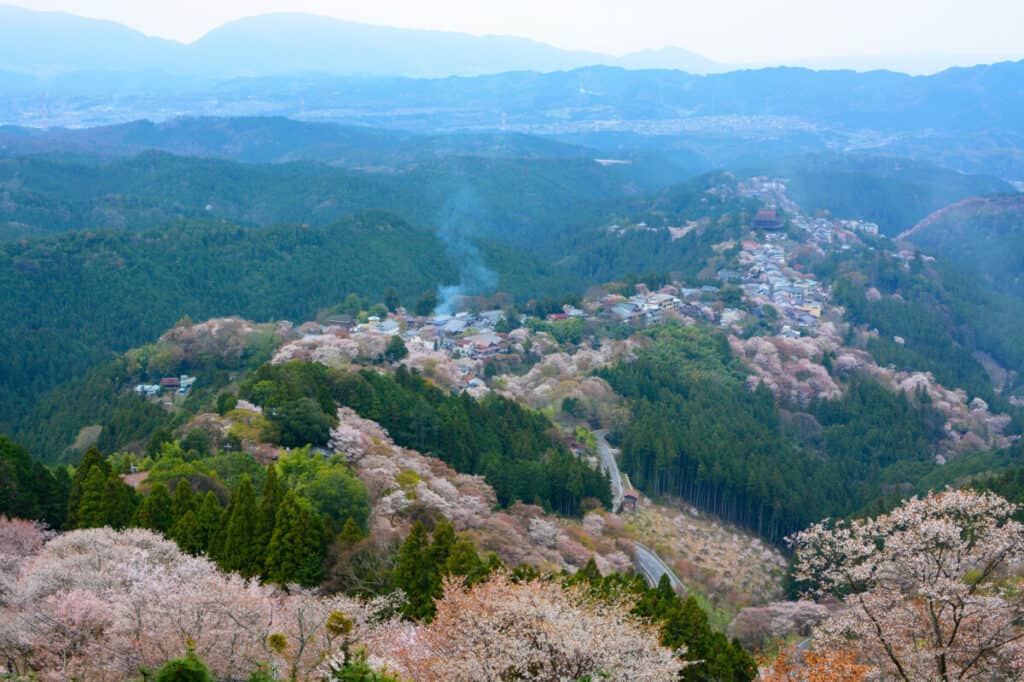
Because of its immense popularity during cherry blossom season, Japan recognized Mount Yoshino as a UNESCO world heritage site in 2004.
What is Unique About Mount Yoshino
Mount Yoshino is a world heritage site near the town of Nara, Japan. The beautiful mountain is known for its many cherry blossoms that cover its side. It has been a popular destination for cherry blossom viewing for thousands of years because of its incredible blooming season.
Traveling From Osaka To Nara Via Osakastation.com
The gradual rise of this mountain means that the flowers bloom slower with altitude. The slow blossoming leads many visitors to stay at Mount Yoshinoyama for several days so they can watch the flowers ascend the mountainside in real-time.
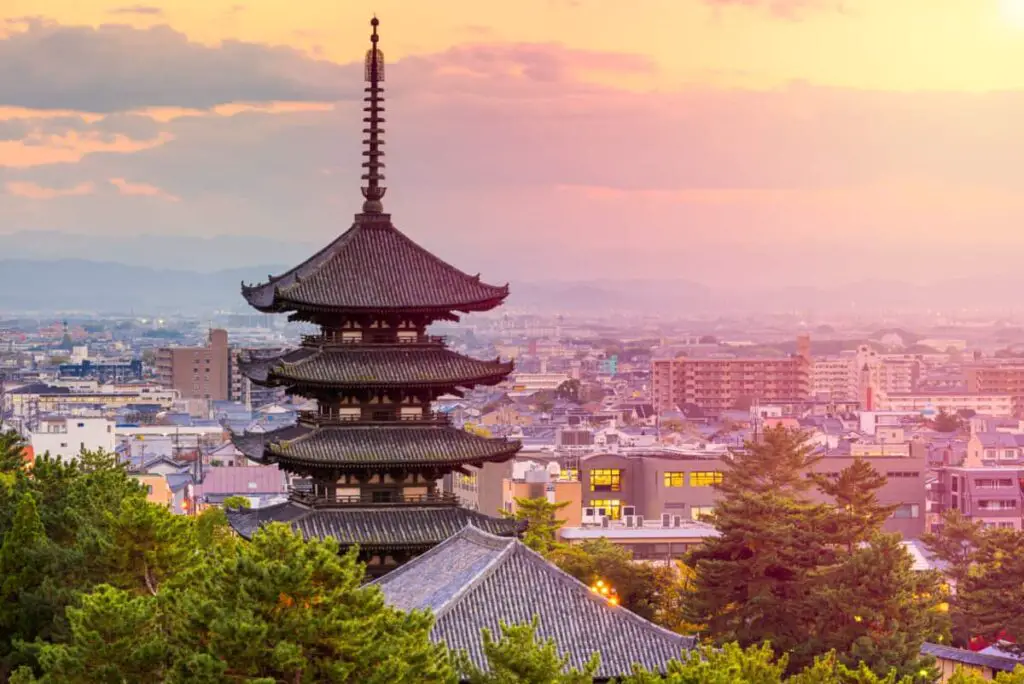
The mountainside is covered with trails, parks, and numerous shrines, making it more than just a place to view blooming trees. People come from across the world to pray to the Shinto shrines.
Exploring Mount Yoshino
People love exploring Mount Yoshinoyama because of the beautiful scenery they can observe along the way. Sakura trees line the mountain slope’s long trail to the top.
These beautiful trees change colors each season, which makes the scenery pleasant to view year-round.
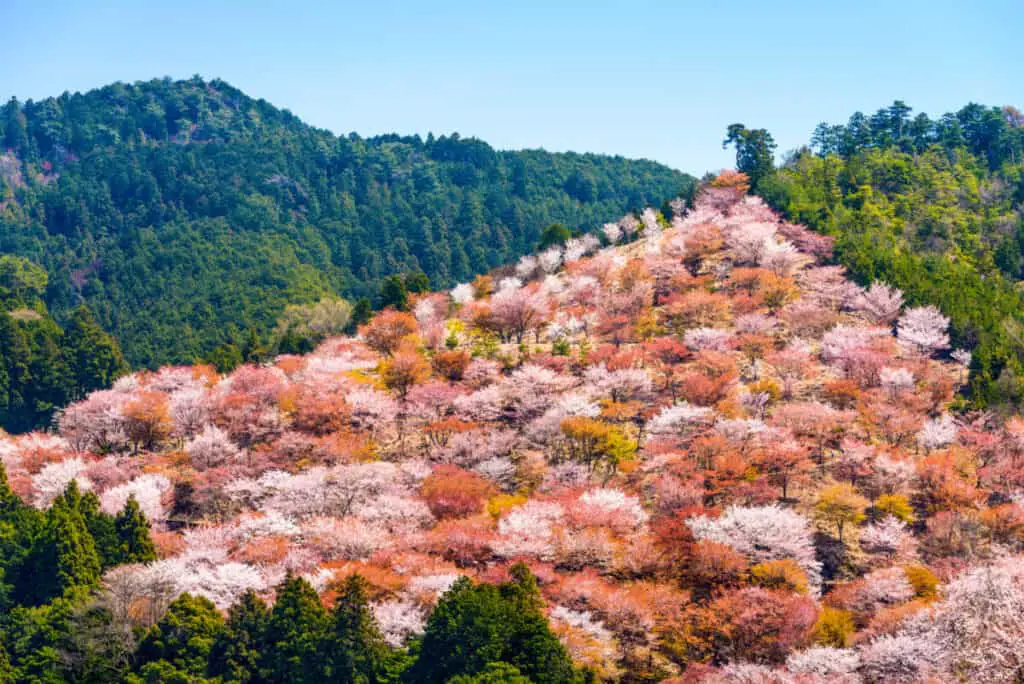
Spring and autumn are the most active times to hike Mount Yoshinoyama. The trees become the most colorful and stunning. However, summer and winter are also great for hiking the mountain.
Observing the changing trees along the four-sectioned mountain slope is breathtaking if you take the time to explore Mount Yoshino each season.
The division of Mount Yoshinoyama
Mount Yoshinoyama is a mountain slope, which slopes to the North. The mountain divides into four sections, so Mount Yoshino is divided by its incline.
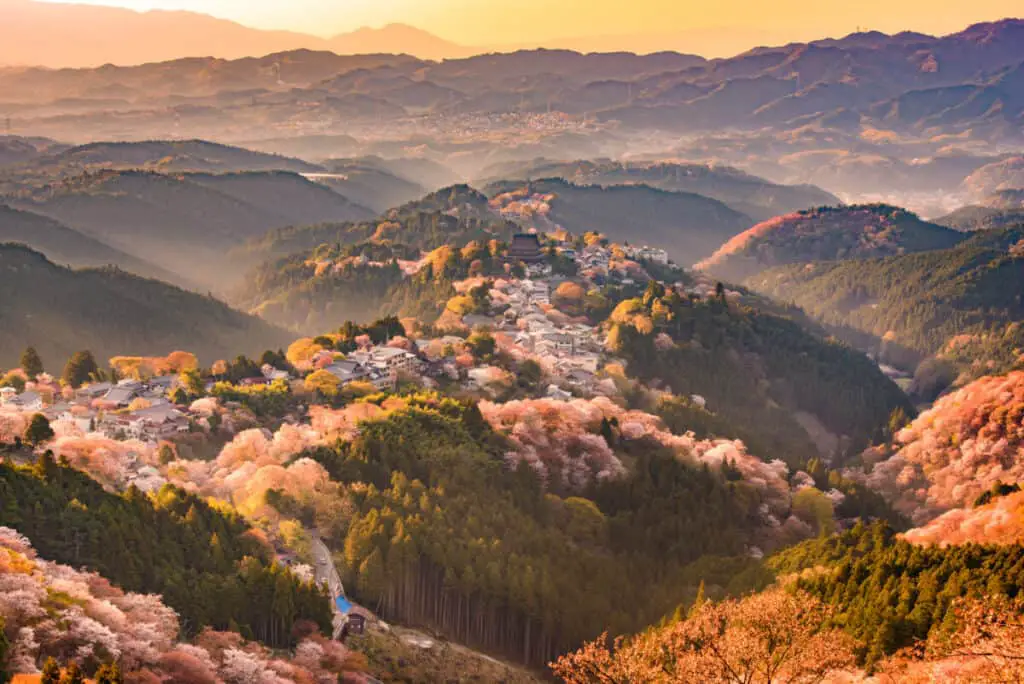
The division of Mount Yoshinoyama is as follows:
- Shimo Senbon (lower) area
- Naka Senbon (middle) area
- Kami Senbon (upper) area
- Oku Senbon (inner) area
The elevation of the mountain causes the flowers to bloom at different rates. This is because of the altitude at which the flowers receive sunlight, water, temperatures, and other vital nutrients necessary to bloom.
Shimo Senbon
The lower area of Mount Yoshinoyama is called Shimbo Senbon. The Shimo Senbon area is the mountain’s base, consisting of flat terrain, and is the first to bloom during spring.
Shimo Senbon starts immediately outside of Yoshinoyama Station and leads to the base of the town.
Yoshino Station Official Website (Google Translate Needed)
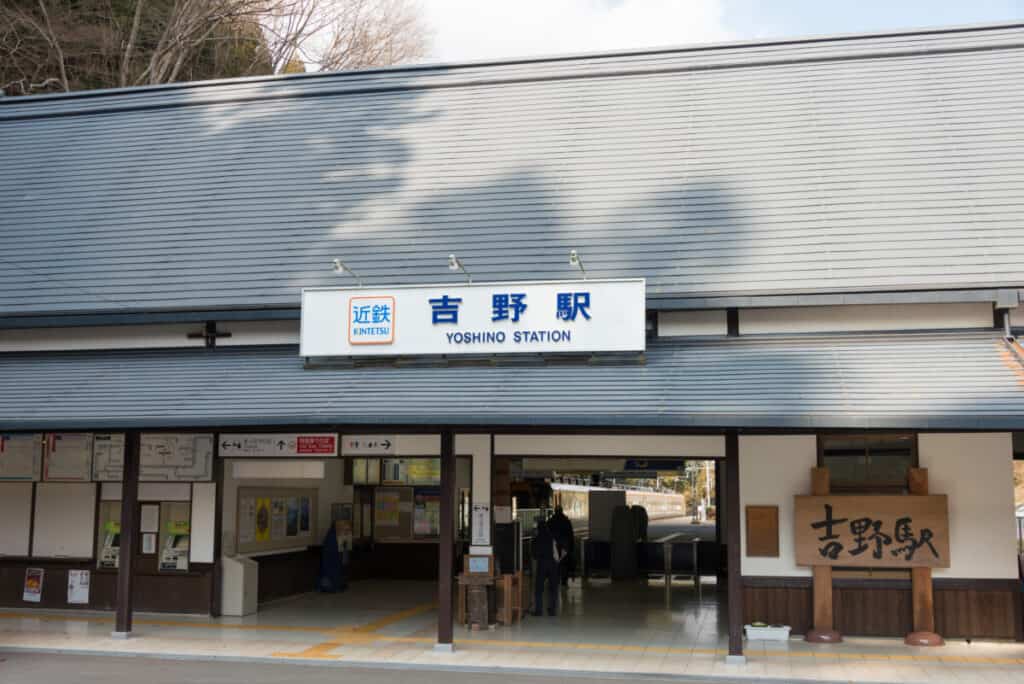
Naka Senbon
Naka Senbon area on Mount Yoshino is the cherry trees in the middle of the mountain slope, which bloom second. This area is mostly flat, located near the base of the town.
The trees here encompass more of the lower part of town, where you will find most restaurants, shops, resorts, and Japanese inns (ryokan).
The Naka Senbon is also where you can find most of Yoshinoyama’s most famous shrines and temples.
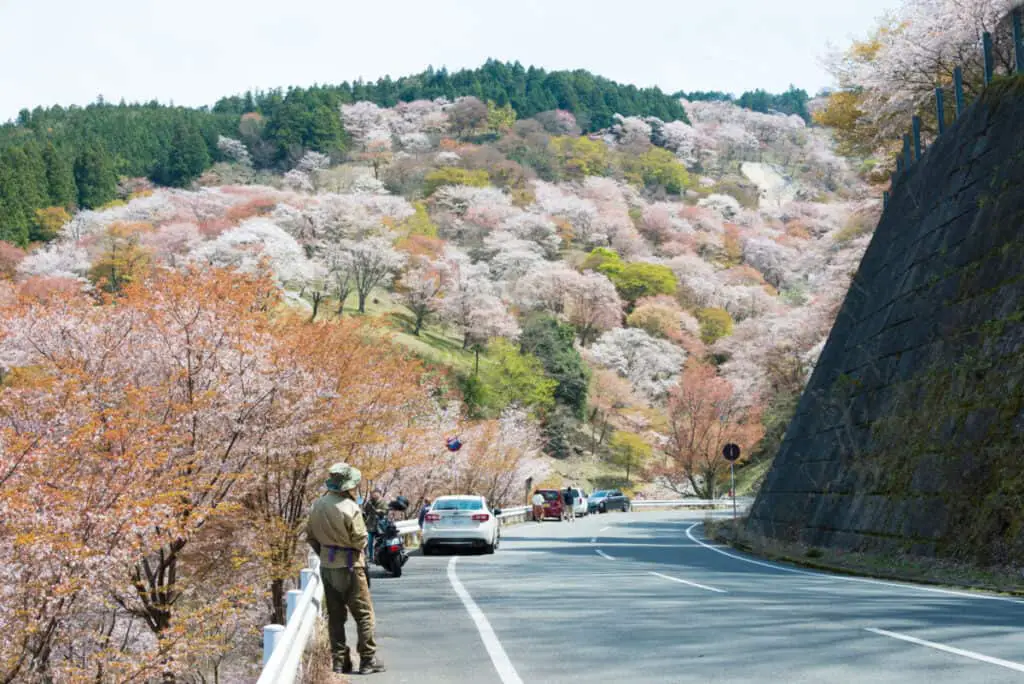
Kami Senbon
The Kami Senbon area of Mount Yoshino is the upper section of the mountain where the sakura trees are the next to last to bloom.
Aside from a few parks, it is mostly natural terrain, and it is less crowded because it is further from town. The view from the Kami Senbon area is picturesque, often known for being one of the most scenic views for cherry blossom viewing in Japan.
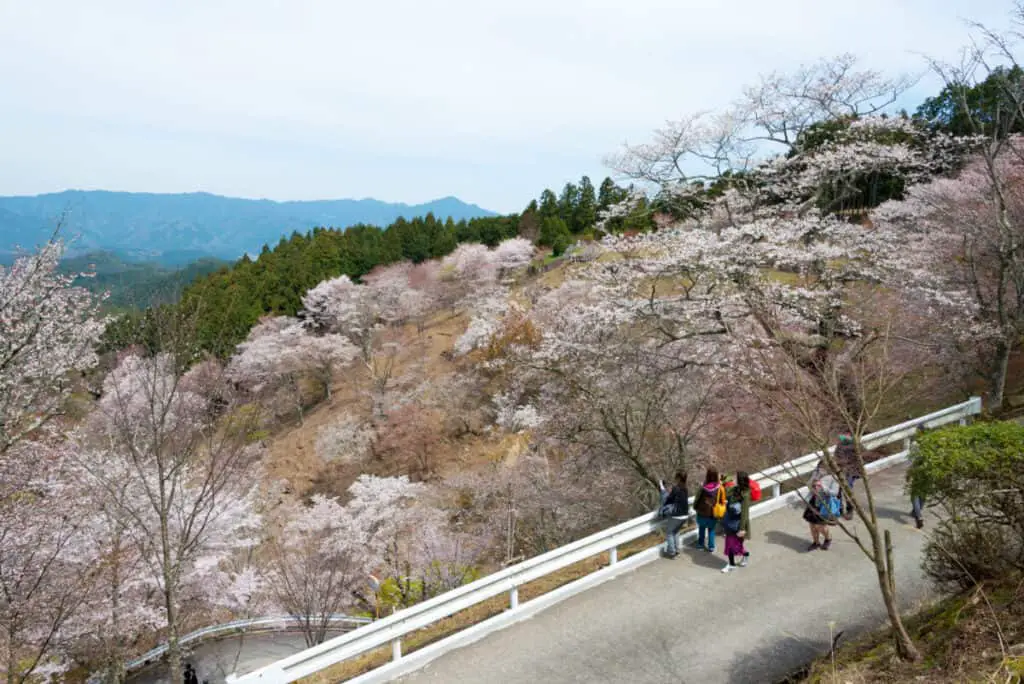
The Kami Senbon area is the ideal location for picnics. There are many isolated areas under the natural terrain for sitting and enjoying a peaceful lunch alone or with a tour group.
In the Kami Sendo area of the mountain is the Mikumari Shrine, dedicated to the Kami goddess of fertility. It is a one-hour scenic walk from the Yoshinoyama Ropeway.
Oku Senbon
The Oku Senbon is the inner section of the trees. These trees are the last to bloom because of the higher altitude. Mount Yoshinoyama’s Oku Senbon region is less frequented because of how late it blooms. Still, there are many beautiful places to view the blossoming trees.
Things to do on Mount Yoshinoyama
The most common reason people visit Mount Yoshinoyama is to experience the beautiful cherry blossom viewing, but that is not the only thing you may do while at this mountainous terrain.
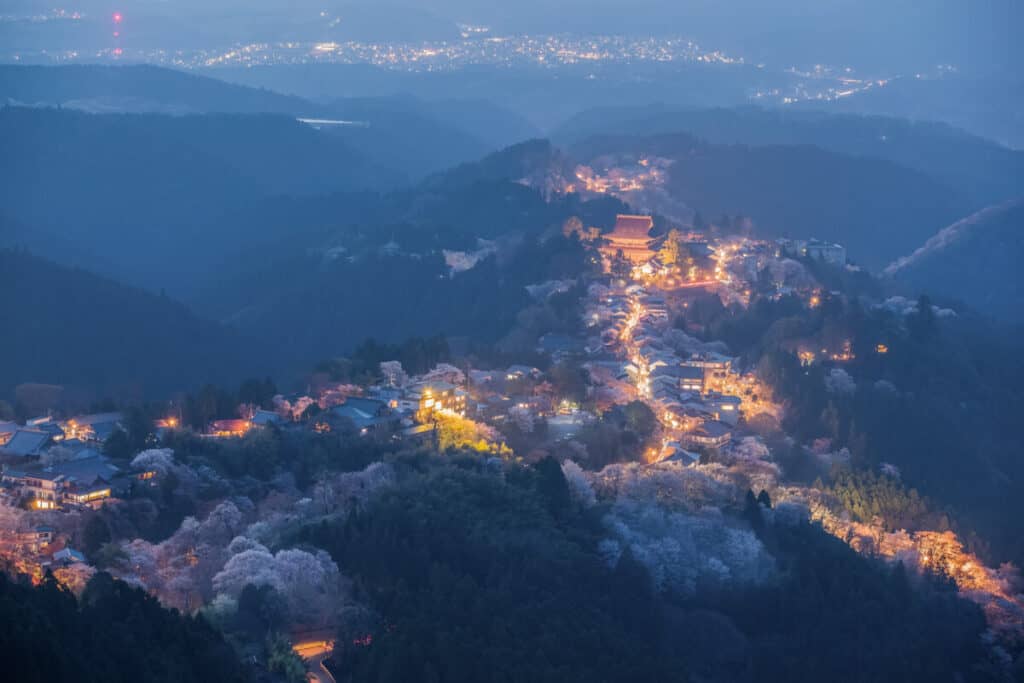
For instance, while hiking the side of this mountain slope, you can take time to visit some of the several shrines or temples along the way.
Visiting historical landmarks on Mount Yoshinoyama will teach you about the cultural history or allow you to say a prayer.
Cherry Blossom Viewing
The most common activity people partake in on Mount Yoshinoyama is viewing the beautiful cherry blossoms during spring. By the end of April, all sakura trees will be in full bloom.
The town in the Naka Senbon area often holds hanami festivals to welcome spring.
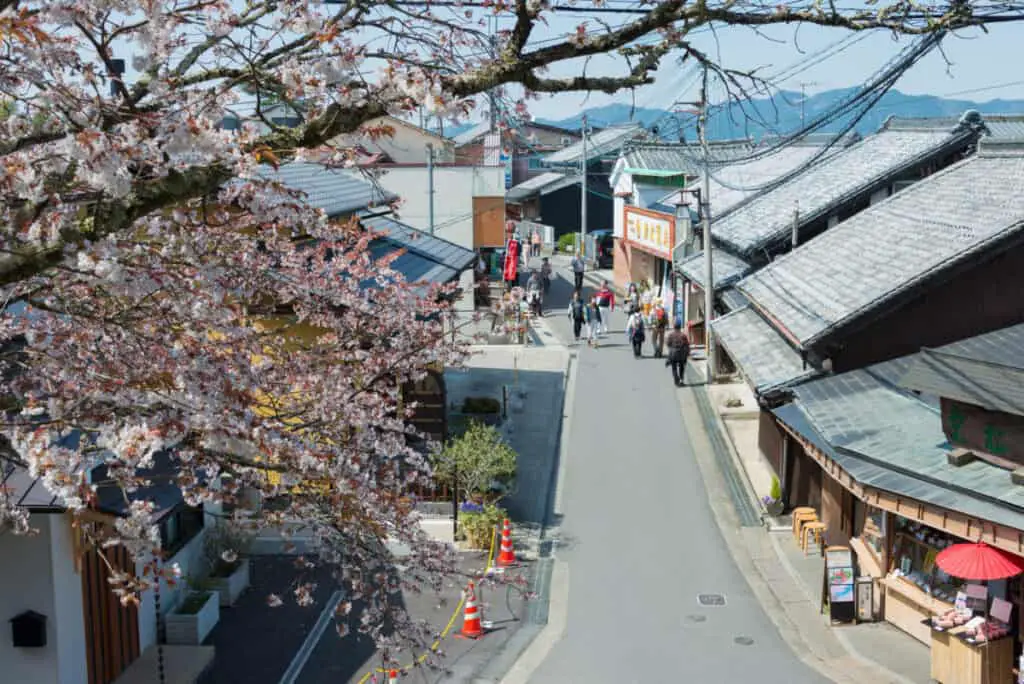
The date of the festival varies because of the different rates cherry trees bloom on Mount Yoshinoyama. The separate sections bloom slowly after one another, separated by only a few days. The sporadic blooming makes hanami viewing a gradual experience that you can enjoy over several days.
Some people choose to spend a day in one mountain area and move on to the next area as the sakura trees blossom.
Hiking To The Summit
Hiking Mount Yoshinoyama is a great way to get exercise while viewing the changing scenery. Mount Yoshinoyama is known for its plant life, which becomes very colorful year-round.
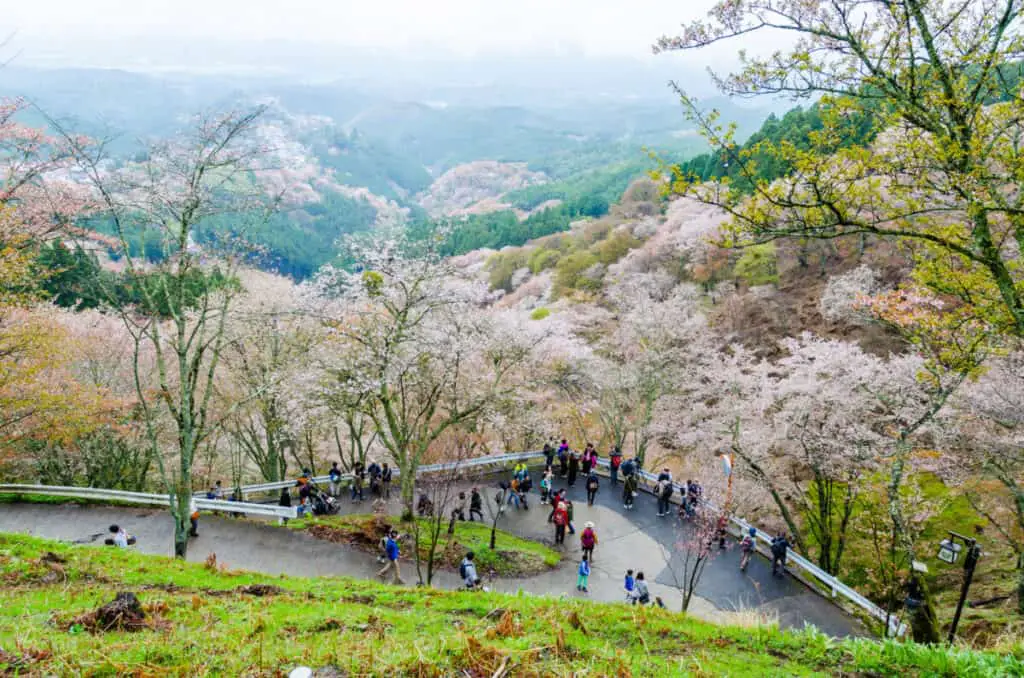
The mountain can take around one to three hours to climb, given it slopes at a gradual incline. There are also several places to stop along the way to the top that may draw your attention and make for great photos.
This relatively short hike is shady, with trees lining the path from top to bottom. The many trees are beautiful during springtime and provide adequate shade on warmer days.
Yoshinoyama Ropeway
For the price of 450 yen one-way or 800 yen round-trip, you may ride the Yoshino Ropeway to bypass the mountain’s steep ascent. This ropeway provides a beautiful view of the mountain terrain, which blooms to life in the middle of spring.
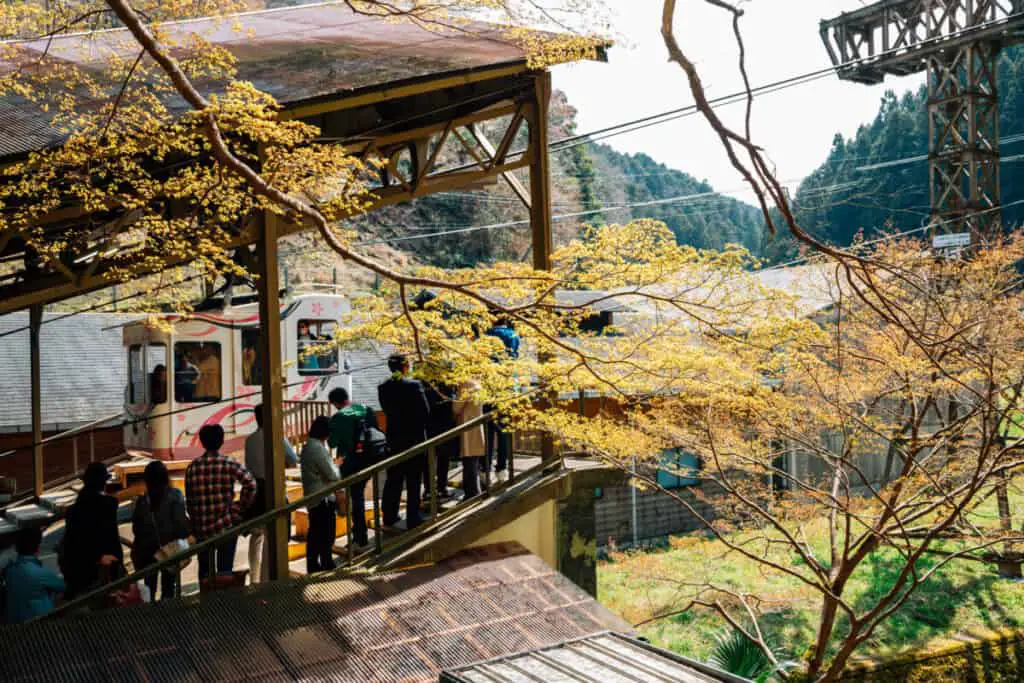
The ropeway was built in 1928 but has undergone several updates since its establishment. One of the modern updates includes painting the exterior of the cars to promote the cherry blossoms.
Many of these cars have bright sakura flowers or fall leaves painted on the sides. These designs make viewing the terrain even more enjoyable.
Temples
A notable temple on Mount Yoshino is Kinpusen-ji. The head temple of the Shugendō religion is referred to as the Kinpusen-Shugendō religion.
Shugendo Relgion Via Wikipedia
The largest and most popular building on-site is called Zaō-Hall, dedicated to the deity Zaō Gongen. It is the second-largest wooden structure in Japan, after the Great Buddha Hall in Nara, the first largest wooden structure. The Shinto followers constructed the temple in the late 7th century.
Kinpusen-ji Temple Official Website
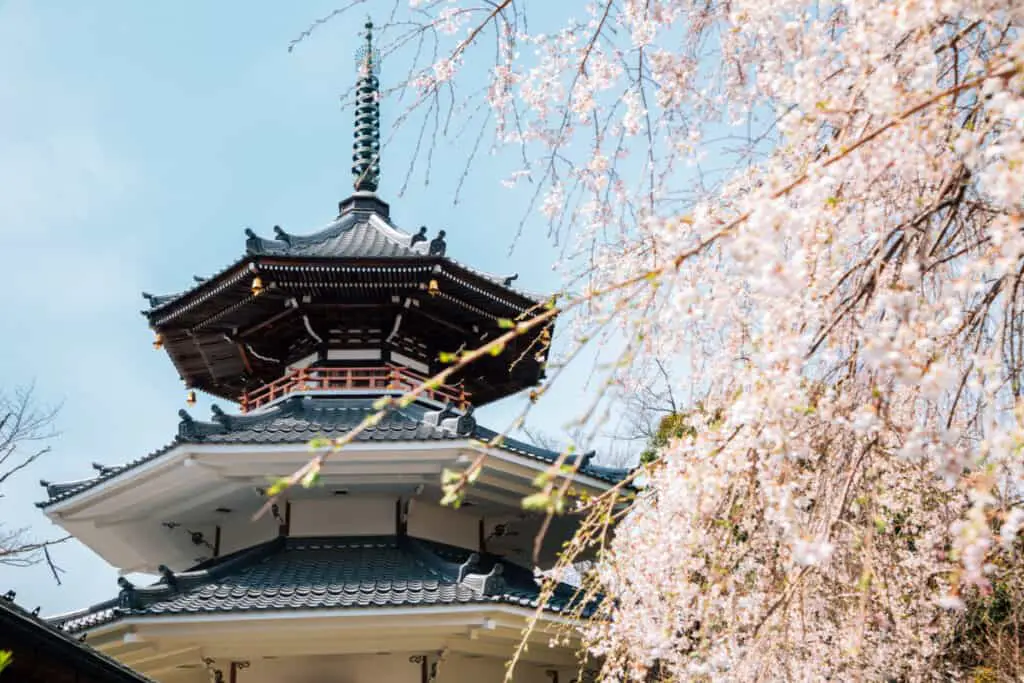
Shrines
There are many shrines on Mount Yoshino that are great to explore. One of these shrines is the shrine dedicated to Inari Ōkami, found in the temple Kinpusen-ji.
Another shrine on Mount Yoshino is Yoshino Mikumari Shine. Yoshino Mikumari Shrine is near the top of Mount Yoshino, in the Kami area. The popular shrine is dedicated to the Shinto fertility goddess, Mikumari.
People visit the shrine to pray for a successful birth, which this water goddess allegedly brings.
Yoshino Mikumari Shrine Official Website
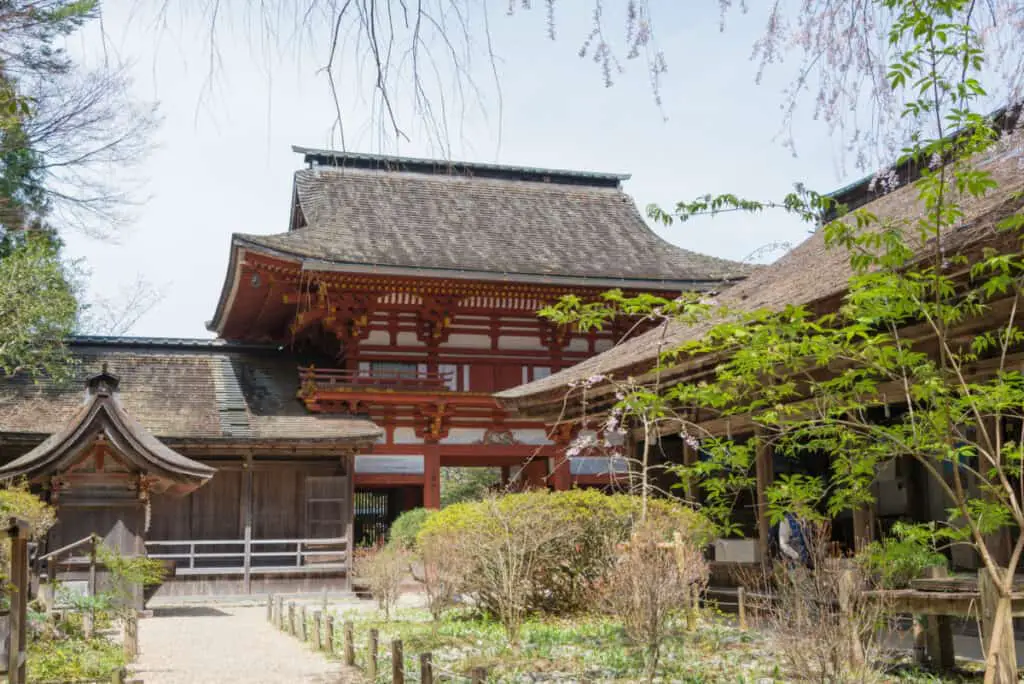
Ryokans Or The Japanese Inn
Staying at a traditional Japanese ryokan can help you make the most of your experience on Mount Yoshinoyama. You may watch the cherry trees as they bloom over several days. As the sakura trees bloom, they will appear to slowly ascend the mountain each day.
Ryokans In Yoshino Via Japaneseguesthouses.com
If you stay in a traditional inn on the mountainside, it is an enriching experience to participate in hanami festivities as you watch the flowers bloom.
Several inns are dispersed in the Naka Senbon area of the mountain, where the town is. The Naka Senbon area is where the people are most active.
The town is where Mount Yoshino holds the most springtime and fall festivities. However, to get the best view of the mountain, you should climb to the top. At the top of the mountain, you can see the colors of the mountain.
Mount Yoshino Official Website










